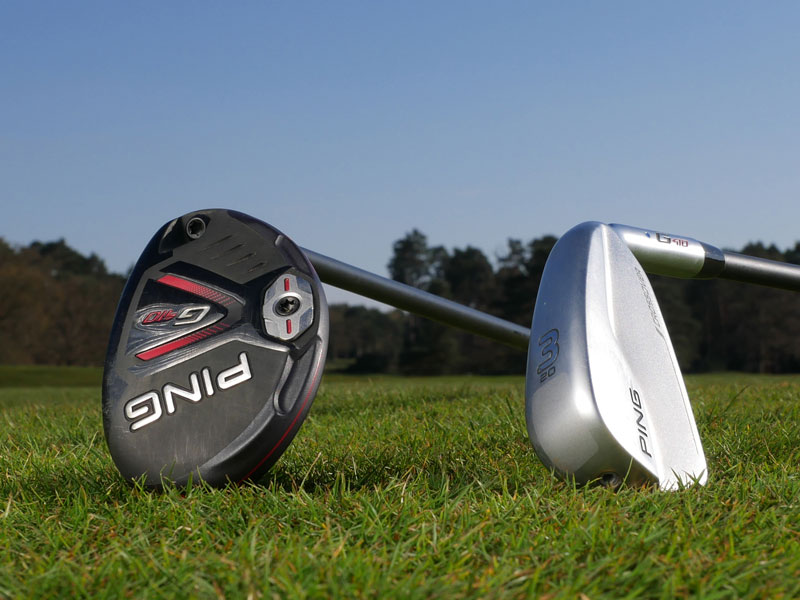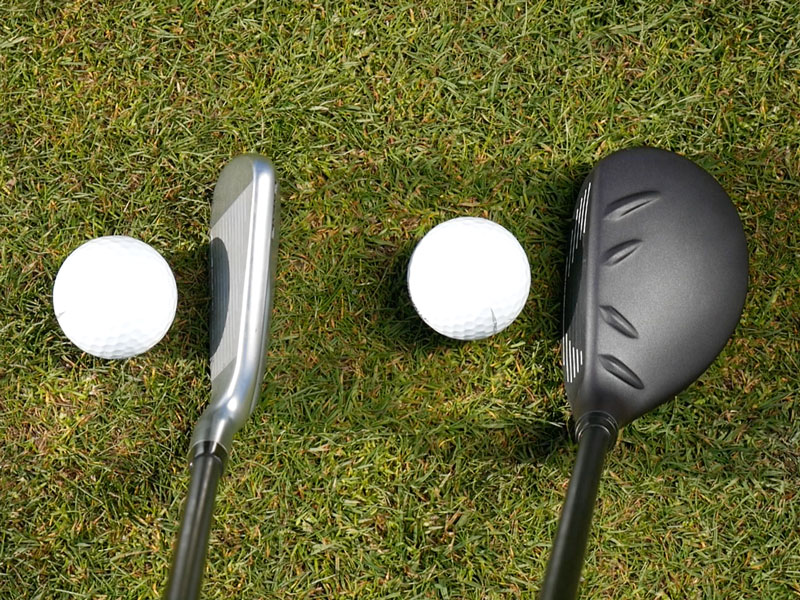Gear Test: Ping G410 Hybrid v Crossover
We find out how the performance between a hybrid and utility iron compares


Gear Test: Ping G410 Hybrid v Crossover - We find out how the performance between a hybrid and utility iron compares
Gear Test: Ping G410 Hybrid v Crossover
It’s a choice many golfers have to make in the top end of the bag and one that can frequently change depending on how you’re swinging the club or which course you’re playing. Choosing between a hybrid or a utility iron can be tricky with so many factors to consider. One brand that offers two excellent choices in both camps is Ping in the form of the G410 Crossover and hybrid.
The G410 Crossover has been made much more compact than the G400 version and yet is more forgiving thanks to a 30 tungsten weight in the toe that stabilizes the clubface on off-centre strikes. It also has a forward CG to promote less shot bend.
Conversely the G410 hybrid has been made a touch larger as is Ping’s first loft-adjustable model. It too has a tungsten weight, this time positioned at the back of the clubhead to assist with launch and forgiveness. It also boasts a textured face for reduced spin and painted grooves to amplify alignment.

We tested both in 20° of loft on the Foresight Sports GCQuad launch monitor and on the range and course to help us ascertain the true performance characteristics of each.
Just looking at the designs, the G410 hybrid looks more forgiving. It has a wider sole that increases the margin for error, as does the slight bulge and roll on the face. The G410 Crossover has a flat face and narrower sole, thus playing more like an iron, which should suit those with steeper attack angles.
Get the Golf Monthly Newsletter
Subscribe to the Golf Monthly newsletter to stay up to date with all the latest tour news, equipment news, reviews, head-to-heads and buyer’s guides from our team of experienced experts.
The launch monitor highlighted some key performance differences between the two. Firstly, the hybrid has a 0.5 inch longer shaft, which meant our club speed was 3mph faster. This resulted in just under 4mph more ball speed with the hybrid.

Interestingly, our attack angle was nearly 1° up with the hybrid and 0.3° down with the crossover, which might explain why the difference in launch between the two was only 1°. The hybrid did still launch higher at 15.5°, no doubt helped by the back weight increasing the dynamic loft through impact.
The spin was the same at around 3400 and with the hybrid launching higher and with more speed, it carried 7 yards longer at 229 compared to 222 with the Crossover thanks to a 4-yard higher flight.
In neutral conditions, the Crossover has a lower, more penetrating flight (shallower angle of descent) meaning the total distance with roll out was similar. With the spin the same, stopping power into greens isn’t as favourable with the Crossover, but it does offer a more suitable alternative off the tee when hitting into the wind.
Which is why you really need to consider when you would employ these clubs on the course during a round.
The lower ball flight of the G410 Crossover is easer to control in wind and the iron like design arguably makes it easier to shape the ball. The shorter shaft could well make it easier to control the clubface too.
The hybrid is the club that is easier to strike consistently and produces better overall results thanks to the extra forgiveness and does stop the ball quicker on the greens when it lands.
It is, however, affected much more by the wind, so when playing on exposed courses or coastal tracks, the lower flight of the Crossover would be a preferable choice. Downwind however, the hybrid does travel significantly further!

Joel has worked in the golf industry for over 15 years covering both instruction and more recently equipment. He now oversees all equipment and video content at Golf Monthly, managing a team of talented and passionate writers and presenters in delivering the most thorough and accurate reviews, buying advice, comparisons and deals to help the reader or viewer find exactly what they are looking for.
One of his career highlights came when covering the 2012 Masters he got to play the sacred Augusta National course on the Monday after the tournament concluded, shooting a respectable 86 with just one par and four birdies. To date, his best ever round of golf is a 5-under 67 back in 2011. He currently plays his golf at Burghley Park Golf Club in Stamford, Lincs, with a handicap index of 3.1.
Joel's current What's In The Bag?
Driver: Titleist GT3, 9°, Fujikura Ventus Black 6 S shaft.
Fairway wood: Titleist TSR3, 15°
Hybrid: Titleist TSi2, 18°
Irons: Titleist T150, 4-PW
Wedges: Titleist Vokey SM10, 50°, 54° and 58°
Putter: LAB Golf DF3
Ball: 2025 Titleist Pro V1x
-
 JM Eagle LA Championship Prize Money Payout 2025
JM Eagle LA Championship Prize Money Payout 2025The LPGA Tour heads to California for the JM Eagle LA Championship, where the largest prize money payout of the season so far is on the table
By Mike Hall
-
 Corales Puntacana Championship Prize Money Payout 2025
Corales Puntacana Championship Prize Money Payout 2025The PGA Tour’s latest opposite field event features an attractive prize money payout and some former champions in the field
By Mike Hall